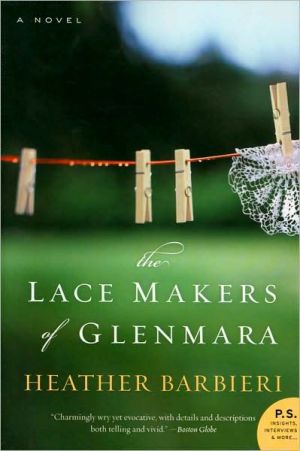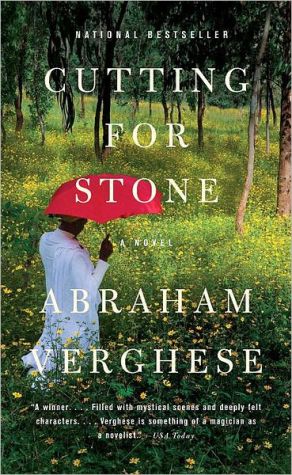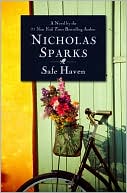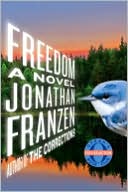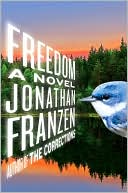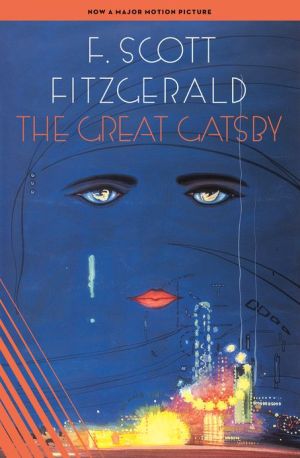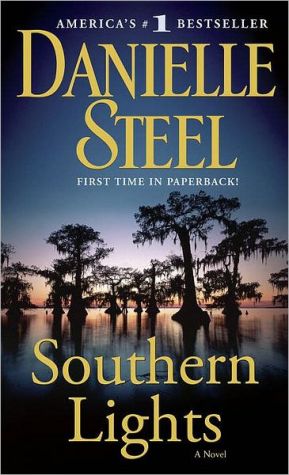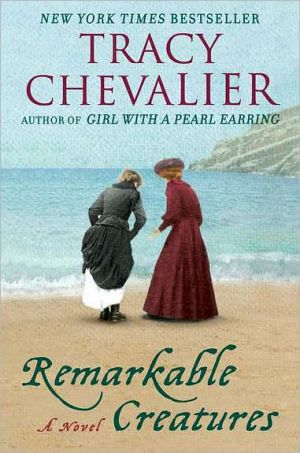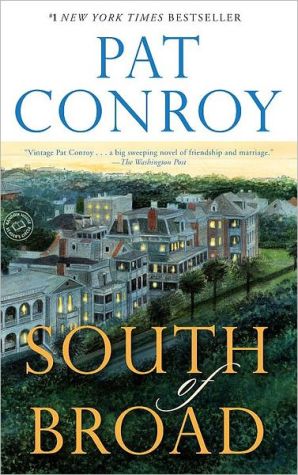The Lace Makers of Glenmara
An enchanting, romantic tale of friendship and love, loss and redemption set in Ireland, in which a young American woman helps a group of lace makers change their lives—and, ultimately, her own.\ "You can always start again," Kate Robinson's mother once told her, "all it takes is a new thread." In the wake of heartbreak and loss, the struggling 26-year-old fashion designer flees to Ireland, desperate to break old patterns. Before she knows it she finds herself on the west coast, in the Gaelic...
Search in google:
An enchanting, romantic tale of friendship and love, loss and redemption set in Ireland, in which a young American woman helps a group of lace makers change their lives—and, ultimately, her own. "You can always start again," Kate Robinson's mother once told her, "all it takes is a new thread." In the wake of heartbreak and loss, the struggling 26-year-old fashion designer flees to Ireland, desperate to break old patterns. Before she knows it she finds herself on the west coast, in the Gaelic village of Glenmara. Kate quickly develops a bond with members of the local lace making society, including the recently widowed Bernie; Aileen, estranged from her husband and teenage daughter; Moira, caught in an abusive relationship; Oona, bearing the scars of breast cancer; and Colleen, who worries about her fisherman husband, lost at sea. And outside this newfound circle is Sullivan Deane, an enigmatic man trying to overcome tragedy of his own. Under Glenmara's spell, Kate finds the inspiration that has eluded her, and soon she and the lace makers are helping each other create a line of exquisite lingerie—and face long-denied desires and fears. But not everyone welcomes Kate, and a series of unexpected events soon threatens to unravel everything the women have worked for…Publishers WeeklyBarbieri (Snow in July) sets her latest in a small Irish town, Glenmara, where a heartbroken American tourist, Kate Robinson, finds her one-night stay extended with the help of some motherly role models. Kate's hostess, chronically grieving widow Bernie, draws the young Seattleite into a gossipy ring of lace makers. Kate, a former fashion designer, takes to them perfectly (one of several head-scratching coincidences), inspiring them to take on an empowering but controversial project. Although the focus is always on the positive, the narrative's strongest when exploring the less charming sides of Glenmara; rich sources of missed potential include the local priest, nicknamed Father Dominic Burn-in-Hell Byrne, and Bernie's irritable best friend Aileen, the only "lace society" member to regard Kate with anything but syrupy goodwill. The result is a sweet novel with few surprises. Even Kate's pivotal, inspirational idea-embellishing the ladies' undergarments with lace-suffers from murky logic (as do reactions from characters like Father Byrne). Still, Barbieri's world generates convincing warmth and emotion, making it worth a look for Friday Night Knitting Club fans between sequels. (July)Copyright © Reed Business Information, a division of Reed Elsevier Inc. All rights reserved.
The Lace Makers of Glenmara\ A Novel\ Chapter One\ That Irish Rain\ Kate had been traveling the road for hours, the rain her sole companion. It was an entertainer, that Irish rain, performing an endless variety of tricks for her amusement. It blew sideways, pounded and sighed and dripped. It hailed neat little balls of ice that melted off her hood and shoulders. She did her best to ignore it. She knew the type. She was from Seattle, after all, the city of her birth, life, and heartbreak. She'd left a few days after the separation on a day much like this nearly a month ago. She didn't know if she'd ever return, but the rain, or its cousin, followed, along with the memories that had driven her from that place.\ The story was simple enough, or seemed to be, on the surface, as stories often are. She adopted a deadpan delivery in the telling, an amusing shtick, as if she were a warm-up act at a comedy club. She'd told the story on so many occasions, drawing laughs and knowing nods and sympathy, that she had the timing down pat. Three minutes. Three minutes was all it took to dissect the end of a five-year relationship.\ It came down to this, she said: Ethan ran off with a model. A girl with black hair and pale skin and aquamarine eyes and a sizable trust fund. A girl who would have been courted by princes and lords if she lived in another time and place. A girl thin and angular as a praying mantis, who wore Kate's designs at her failure of a fashion show and claimed to be her friend.\ The model spoke five languages, was a champion fencer and violin virtuoso. Kate lacked such impressive qualifications. She knew enough French to orderthree courses in a café or ask directions to the train or toilet, so long as accents and dialects weren't too strong. She could run a seven-minute mile. She thought of herself as pretty, not beautiful. Petite, not tall. She tended to be lucky at cards, though little else relating to games of chance. She loved Fellini movies and popcorn and chocolate cake. And she loved Ethan, still, after everything that had happened.\ She couldn't stop thinking about him, imagined making arguments far more winning than she was capable of in real life. Real life was empty rooms. Real life was eating and cooking for one. Real life was less laundry and a cleaner apartment. (He was a pack rat and a piler—he should have come with a warning.) Real life was waking up alone. Which was all right, because she was furious about the betrayal. Furious, yes, though still in danger of succumbing to the impulse of forgiveness, as she had before. No more. She was resolute, intent on enjoying this sojourn as much as possible, keeping sorrow at bay. The road lay before her, plain and simple, offering two ways to go, forward or back, no forks or splits or detours, just wide-open fields of lumpy, foxglove-strewn green. The road made no excuses or apologies. It didn't have to. It was what it was. It went on, walls of moss-bearded stone hemming in the narrow lane, past ruined farmhouses with half-collapsed roofs and blackened eyes. She'd been walking and hitching for nearly a month, in the far western part of the country now, one of the few areas in which signs of civilization were slim to nil. She liked it that way. She'd toured Dublin in four days. Dublin, both grand and gritty: the halls of Trinity, the Book of Kells, the Georgian streets, the museums, with glass-encased mannequins and mummies with tattered clothes and bad teeth and marble eyes; heroin addicts stealing her backpack (she gave chase, recovered the bag, she could be swift and fierce when she wanted to be); housing estates and suffocating smog. There were two sides to everything. Two sides, if not more. She'd taken one bus, then another, heading for the mythical west, buses that didn't take her as far as they were supposed to, missing connections, finally breaking down entirely, the station agents saying new vehicles would arrive within the hour, then two, then three, claims that took on the air of fairy tales. In the end, she grew tired of waiting and set off on foot, eventually winding up here, exhaustion making the scene all the more surreal.\ Each step she took left a mark, some visible, some not, marks that said, I was here, I exist. That was one of the reasons people went away, wasn't it, to forget, to reinvent themselves?\ She'd been a quiet person at home, had let the gregarious people in her life—Ethan, her friend Ella, even her mother—take the lead, happy to be the soft-spoken sidekick who offered the occasional sage remark, witty aside.\ She was on her own now. It felt strange, yes, but she was ready for something new, to be someone new.\ The air smelled of grass, damp, dung, and peat smoke from a distant fire, though she saw no indications of life in the immediate vicinity, other than cows and sheep. They weren't the sheep of her dreams, white and pure and fluffed, but dingy and yellowed and matted. Maa, said the sheep. Maa, she replied, the exchange bringing her to the point of tears, because it was something Ethan might have done, when they were easier together and kindnesses and clowning were possible. Maa? as if the animals had lost their mother, as she had done, that February.\ No crying, she told herself sternly. She could keep herself in hand, smile in spite of everything. It wasn't so hard, really. You can choose to be happy.\ She didn't mind the rain, not usually, but this was too much. I should have picked some place drier, she thought ruefully, like Spain. But even Spain had its challenges that year, with legions of stinging jellyfish, blackouts, and a plague of voles consuming crops and gardens; she'd read about it in the paper.\ Shouldn't the weather be nicer by now, so close to the first of May? She took shelter under a rhododendron, its blooms surrounding her with pinked fragrance, and nibbled on an energy bar, which tasted like sawdust in the best of circumstances, and these, assuredly, were not. She wasn't hungry—she was never hungry at the beginning or end of a love affair, this one, especially, this one that was supposed to last. Everyone had been so sure she and Ethan would get married, that she would catch the bouquet at the medieval wedding they attended that March (the couple being devoted not only to each other but to the Society for Creative Anachronism), the event at which he left her, if not at the altar, just southwest of it, next to an ice sculpture of a knight in shining armor that had begun to melt, a moat of water at his feet, his sword soon no more than a toothpick.\ The Lace Makers of Glenmara\ A Novel. Copyright © by Heather Barbieri. Reprinted by permission of HarperCollins Publishers, Inc. All rights reserved. Available now wherever books are sold.
\ Karen Campbell"Barbieri’s deft writing style is charmingly wry yet evocative, with details and descriptions both telling and vivid. . . . . A sweet summertime yarn [that] . . . provides a lovely, leisurely escape to the bucolic charms of the Emerald Isle."\ \ \ \ \ Publishers WeeklyBarbieri (Snow in July) sets her latest in a small Irish town, Glenmara, where a heartbroken American tourist, Kate Robinson, finds her one-night stay extended with the help of some motherly role models. Kate's hostess, chronically grieving widow Bernie, draws the young Seattleite into a gossipy ring of lace makers. Kate, a former fashion designer, takes to them perfectly (one of several head-scratching coincidences), inspiring them to take on an empowering but controversial project. Although the focus is always on the positive, the narrative's strongest when exploring the less charming sides of Glenmara; rich sources of missed potential include the local priest, nicknamed Father Dominic Burn-in-Hell Byrne, and Bernie's irritable best friend Aileen, the only "lace society" member to regard Kate with anything but syrupy goodwill. The result is a sweet novel with few surprises. Even Kate's pivotal, inspirational idea-embellishing the ladies' undergarments with lace-suffers from murky logic (as do reactions from characters like Father Byrne). Still, Barbieri's world generates convincing warmth and emotion, making it worth a look for Friday Night Knitting Club fans between sequels. (July)\ Copyright © Reed Business Information, a division of Reed Elsevier Inc. All rights reserved.\ \ \ Library JournalIn her second novel (after Snow in July), Barbieri puts a graceful spin on the theme of a young woman influenced and aided by a group of older female friends. Kate has been deeply shaken by the collapse of her romance with longtime boyfriend Ethan. She takes her deceased mother's advice to heart and travels to Ireland, hoping to gain a fresh perspective on her life. Stranded by rainy weather, she finds herself in a little bed-and-breakfast owned by Bernie, an older woman with a heart of gold who is dealing with the recent death of her beloved husband. As Kate settles into the small village, several members of a local lace-making guild take her under their wings. Kate's background as a fashion designer and seamstress helps her form a strong bond with the diverse group of women. VERDICT A delicately handled romantic subplot featuring a somewhat shy and emotionally wounded Irishman named Sullivan rounds out a compelling and charming story line. Readers who have enjoyed the novels of Maeve Binchy and perhaps Rosamunde Pilcher will find this book equally entertaining.—Margaret Hanes, Warren P.L., MI\ \ —Margaret Hanes\ \ \ \ \ Kirkus ReviewsIn the aftermath of a bad relationship and her mother's untimely death, a Seattle seamstress flees to her ancestral Ireland. Glenmara, the fictional setting of Barbieri's disappointing second novel (after Snow in July, 2004), is a decaying hamlet near the rocky Galway coast. Despite endemic poverty, the village boasts a lace-makers guild: craftswomen who eke out a few euros on tea towels and napkins sold at the village market, when they're not edging altar cloths gratis for curmudgeonly parish priest Father Byrne. Into this anachronistic world wanders Kate, a failed fashion designer who left Seattle for Ireland after her mother succumbed to cancer and her boyfriend dumped her for a model. Elder lace-maker Bernie, widowed and childless, opens her home to the waiflike American. The women demonstrate their delicate art to Kate and tell their stories. Oona is a breast-cancer survivor. Colleen, whose angelic singing voice marks her as a descendent of the mythical selkies (mermaids), fears the sea may claim her fisherman husband. Aileen is troubled by her teenage daughter's Goth phase. Moira lives in fear of her abusive spouse and lies about the origin of the bruises on her face. Kate is introduced to the craics (dances), where she bests Aileen at stepdancing, and to Sullivan, the town Lothario, whose black hair and piercing eyes telegraph that he's the one for her. The central conceit here, reminiscent of Joanne Harris's Chocolat (1999), is that a newcomer introduces a magical Macguffin. In this case, it's Kate's new line of lingerie trimmed with Glenmara lace, which not only revives guild members' marriages, but also challenge the forces of prudery and male oppression. The promising fracasgenerated by the "knicker wars"-Byrne denounces the guild from the pulpit-dissipates when the priest is conveniently downsized. Barbieri's amateurish prose, replete with comma splices and misplaced modifiers, is utterly unworthy of Yeats, Trevor, O'Brien and other masters whose names are dropped like wishful talismans throughout. Erin go Blah.\ \
